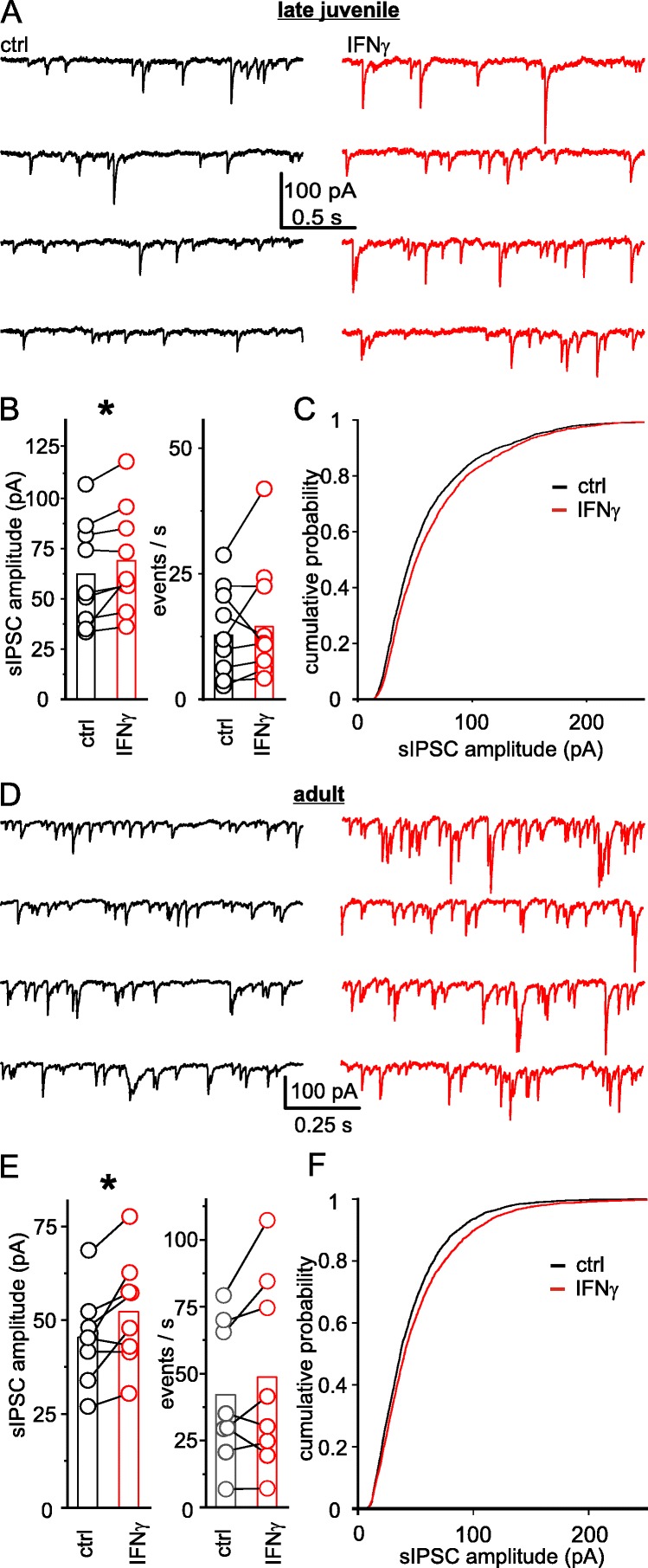Fig. 5.

IFN-γ increases the amplitude of spontaneous IPSCs in neocortical layer 5 pyramidal neurons of late juvenile and adult rats. Spontaneous IPSCs were recorded in the presence of CNQX and DAP5 to block ionotropic glutamate receptors. a, d Example traces of sIPSCs of late juvenile (a) and adult (d) rats before (black) and after application of IFN-γ (1000 IU ml−1; 20 min; red). b, e IFN-γ application (20 to 30 min) increased sIPSC amplitudes of pyramidal neurons of late juvenile (b) and adult (e) rats (left) but left sIPSC frequency (right) unchanged. c, f Cumulative sIPSC amplitudes in neurons of late juvenile (c) and adult (f) rats after application of IFN-γ (red) were shifted to bigger amplitudes when compared with control (black). Holding current (for late juvenile rats 325.7 ± 91.9 pA vs. 412.5 ± 72.5 pA, n = 9; P = 0.13, Wilcoxon signed-rank test/for adult rats 135.5 ± 28.2 pA vs. 135.0 ± 19.5 pA, n = 8; P = 0.97, paired t test) and Rs (for late juvenile rats Rs-ctrl = 9.2 ± 2.1 MΩ vs. Rs-IFN-γ = 9.4 ± 2.2 MΩ, n = 9; P = 0.7, Wilcoxon signed-rank test/for adult rats Rs-ctrl = 7.1 ± 1.0 MΩ vs. Rs-IFN-γ = 7.0 ± 0.5 MΩ, n = 8; P = 0.8, paired t test) remained comparable. Mean age of animals P19.0 ± 1.0 (late juvenile) and P60.0 ± 0.6 (adult)
